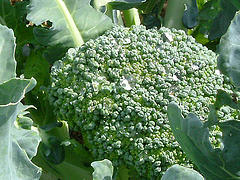Whether you’re recovering from an injury or simply looking to begin a workout routine from scratch, low-impact workouts are often just as beneficial as more explosive styles. Here are a few low-impact workouts that will take it a bit easier on your body while still showing major results.
- Kettlebell swings. Any exercise that burns up to 600 calories in just 30 minutes should be on your list, and that’s just what you’ll get with kettlebell swings.
- Swimming. If your gym has an indoor or outdoor pool, try swimming some simple laps to get in a great cardiovascular exercise that burns fat without putting much impact on your body.
- Barre classes. This trendy, ballet-inspired workout actually lives up to the hype. Barre’s sequences of pliés, squats, and repetitive arm movements are proven to burn major calories, and they also go easy on your joints.
- Cycling. If you love running but simply can’t handle the strain that it puts on your knees and ankles, try cycling instead. The average hour-long class burns between 600 and 750 calories.
- Power yoga. While all types of yoga are beneficial to your health, more traditional styles don’t particularly burn a lot of calories. If you’re looking to lose weight, try a power yoga class instead.
- Fast-paced walking. Speed up your usual walk to torch calories without going too hard on your joints.
Low-Impact Exercises That Burn Major Calories [SparkPeople]
8 Low-Impact Workouts That Still Burn Major Calories [Shape]
8 Low-Impact Workouts That Torch Calories [Prevention]




![By Cjbvii (Own work) [CC-BY-3.0 (www.creativecommons.org/licenses/by/3.0)], via Wikimedia Commons](http://www.respage.com/cms/img/261.jpg)
![By Henri Bergius from Finland (Walking) [CC-BY-SA-2.0 (www.creativecommons.org/licenses/by-sa/2.0)], via Wikimedia Commons](http://respage.com/cms/img/89.jpg)

![By lululemon athletica (peace) [CC-BY-2.0 (www.creativecommons.org/licenses/by/2.0)], via Wikimedia Commons](http://respage.com/cms/img/211.png)
![By Alv (Own work) [GFDL or CC-BY-SA-3.0], via Wikimedia Commons](http://www.eretriever.com/cms/img/2157.jpg)

 Equal Housing Opportunity
Equal Housing Opportunity